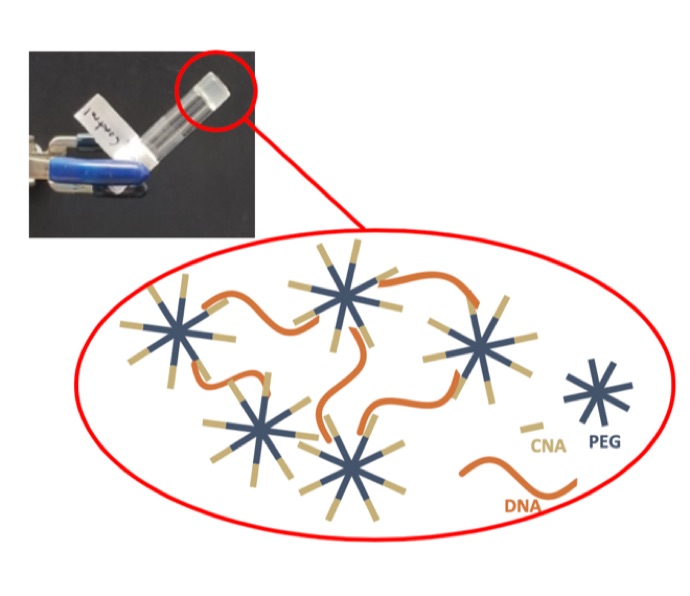 Radical, light initiated chemical reactions were used to synthesize multifunctional, star-shaped polmyers with each chain end bound to a DNA mimicking polymer (the “Click Nucleic Acid or CNA developed with the support of the NSF). When combined with single stranded DNA with a complementary bases, these star-polymers arrange in a network that is held together by noncovalent attractions. Analysis of these materials shows that they degel or “melt” at higher temperatures and reform when cooled down.
Radical, light initiated chemical reactions were used to synthesize multifunctional, star-shaped polmyers with each chain end bound to a DNA mimicking polymer (the “Click Nucleic Acid or CNA developed with the support of the NSF). When combined with single stranded DNA with a complementary bases, these star-polymers arrange in a network that is held together by noncovalent attractions. Analysis of these materials shows that they degel or “melt” at higher temperatures and reform when cooled down.
The development of dynamic hydrogels is a highly sought after goal in the field of tissue engineering and biomaterials. Often, covalent hydrogels that can degrade are used to study and culture cells in an environment that resembles their native tissues. As these gels degrade, however, they lose structural integrity, disintegrating and become no longer suitable for the cells. Gels held together with non-covalent interactions can rearrange their polymer chains to accommodate the cells’ movement without losing the advantageous mechanical properties.
This highlight and associated research was supported by NSF through the University of Colorado Materials Research Science and Engineering Center, DMR 1420736.
Reference – "NEW GENERATION OF CLICKABLE NUCLEIC ACIDS: SYNTHESIS AND ACTIVE HYBRIDIZATION WITH DNA", X. Han, D.W. Domaille, B.D. Fairbanks, L. He, H.R. Colver, X. Zhang, J.N. Cha, C.N. Bowman, Biomacromolecules, 19, 4139-4146 (2018). DOI: 10.1021/acs.biomac.8b01164